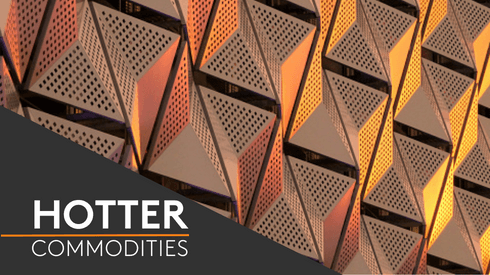Producers, particularly of steel long products such as rebar that feature heavily in construction projects, are expecting to see better times ahead if ageing bridges, highways and tunnels are replaced or repaired.
They are also reassured by Trump’s pledge to put “American steel made by American workers into the backbone of America’s infrastructure”.
Coupled with an aggressive trade agenda, which could see more significant duties placed on foreign steel and punishment for outsourcing, this bodes well for domestic steelmakers in the USA, with producers seeing substantial share price gains as Trump prepares to take office.
And steel industry executives recognise this pivotal moment.
“Now that our issues are front and centre, now that we have that seat at the table, we can’t afford to squander this moment,” according to president and ceo of Schnitzer Steel Industries, Tamara Lundgren.
“There’s too much that needs to get done. {There are] too many issues of real and urgent importance to our industry and to our country,” she told delegates at Metal Bulletin sister publication AMM’s 10th Steel Scrap Conference in Chicago last year.
While US infrastructure has consistently received a ‘D’ grade from the American Society of Civil Engineers, Lundgren said, China’s infrastructure investment roughly amounts to what is being spent in the USA and Europe combined.
Trump has pledged to introduce and pass his infrastructure package, which would run over a ten-year period, within his first 100 days in office.
But Kathryn Thompson, ceo of Nashville, Tennessee-based construction research and advisory firm Thompson Research Group, said that – based on her own analysis and conversations with a Trump adviser – the actual spending package could be closer to $500 billion than the stated $1 trillion.
And the impact on prices could already be baked in, even before Trump takes office, according to Ed Meir of New York-based INTL FCStone.
“The plan turbocharged metals prices [in the] last quarter, stirring up visions of massive amounts of material being used in an orgy of construction,” he said. “However, we think the markets are currently walking this scenario back.”
This comes as “US consumption of key non-ferrous and ferrous metals is rather small and pales in comparison to that of China”.
“In copper’s case, for example, China consumes roughly 50% of the world’s supplies, while the US share is 8%. The breakdown is similar in a host of other metals as well, including steel,” Meir said.
“The drawn-out nature of [Trump’s] US infrastructure spending [plan] will dilute the bullish impact that the stimulus will have,” he added.
So while the price impact could be muted, another unanswered question is how Trump will pay for his ambitious plan, which, according to Trump’s own website, will present “a golden opportunity for accelerated economic growth and more rapid productivity gains”.
The president-elect plans to “leverage new revenues and work with financing authorities, public-private partnerships and other prudent funding opportunities” and intends to “harness market forces to help attract new private infrastructure investments through a deficit-neutral system of infrastructure tax credits”.
What that means exactly, remains to be seen, but one analyst told AMM that financing the investment through private-public partnerships is misguided and will lead to a severe shortfall.
That’s because Trump’s plan mimics an existing infrastructure financing programme that has not been particularly successful – the Transportation Infrastructure Finance and Innovation Act (Tifia) – according to Axiom Capital Management senior analyst and managing director Gordon Johnson.
The Act has seen far lower funding from the private sector compared with funds authorised by Congress, despite similar incentives being available for private investors, Johnson told AMM last year. And Trump’s plan might fare even worse.
“With Tifia, if you’re a debt financier, you’re getting 80% government incentives with loans and cash grants,” Johnson said. “With Trump’s plan, you’re getting nothing.
“Tifia can’t get more than $2.50 billion per year. You don’t have to have a finance degree to understand why [financing Trump’s infrastructure spending plan] is, I would argue, impossible,” he added.
Johnson also regards as misguided a white paper – written by US commerce secretary nominee Wilbur Ross and National Trade Council director Peter Navarro – on public-private infrastructure investments, such as toll roads and bridges.
He sees these projects as having historically “very low returns”, making them unattractive to private investors. The paper outlined how $167 billion in equity investment could leverage and finance $1 trillion in US infrastructure spending, given certain tax credits for private investors.
Some of the most significant beneficiaries of Trump’s policies could be the pipeline companies, which are not reliant on government support for their projects.
Trump has vowed to significantly reduce energy market regulation and approve the cross-country pipelines that were stalled under president Obama, with TransCanada’s Keystone XL pipeline an example..
Now, unfortunately for steelmakers, most of the Keystone XL pipe has already been made, but other projects could be unleashed that help large-diameter pipe producers in particular.
Trump has vowed to “approve private sector energy infrastructure projects – including pipelines and coal export facilities – to better connect American coal and shale energy production with markets and consumers”.
Nat Rudarakanchana and Mei Ling Toh contributed to this report.





